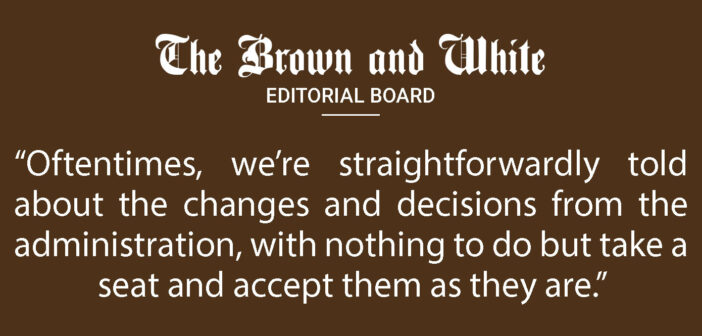Put yourself back into elementary school for a moment, thinking through one of your first homework assignments in your humble abode.
As you unpack your colored pencils and notebook, you encounter a simple multiple-choice question. Upon picking from the small subset of choices, you sloppily scribble in the corresponding bubble and move along.
You catch a glimpse of the next question: the dreaded “Why? Explain your answer.” Though it’s a vexing question that required a greater deal of effort as a pupil, it made sense to express the thought process of your previous conclusion.
Our present-day decision-making processes emanate from our childhood learnings. Every decision we come to has reasoning – what aspects you take into account, the pros and cons you weighed and so forth.
Without the transparency of the explanation, how would anyone know that you didn’t just cover your eyes and throw a dart at one choice or another? The thought process is just as important as the answer itself – whether you’re six years old or 60 years old.
As the top-level leaders of our own humble abode, Lehigh’s administration has made the majority of the hard-hitting decisions that impact our community.
Oftentimes, we’re straightforwardly told about the changes and decisions from the administration, with nothing to do but take a seat and accept them as they are.
Yet, many of these decisions occur with no publicized explanation – no mention of why these choices were made. We’re left to wonder what factors are taken into consideration, who was consulted and what the circumstances were.
Here are several decisions worth noting:
Lehigh’s annual undergraduate tuition has risen each year by some percentage – except the academic year amidst the pandemic. Typically, before the start of the academic year, this increase is publicized in an email of a few short, vague paragraphs.
We, as undergraduate students, seldom see any kind of explanation as to why they were raised. There’s no explanatory detail as to where exactly our tuition money is going.
Additionally, for the first semester back in person since 2020, Lehigh has chosen to continue to stay conscious about COVID-19, implementing rules and regulations across campus. While it is completely understandable to still take precautions for an ongoing pandemic, the administration has also chosen to invite hundreds of alumni to gather for the Lehigh-Lafayette rivalry this coming weekend.
These two decisions seem to have conflicting values, and the decision-making process behind both of these decisions remain unclear. Why would Lehigh choose to conduct the large gatherings that we previously thought they’d want to avoid? It’s the conflicting two decisions that require more transparency. What does the administration value?
The admissions deadline for early decision for the incoming class was pushed back by a week, with no explanation. A visiting mathematics professor was abruptly removed, with no explanation (from the administration, at least).
Many various choices made by Lehigh’s administration continue with no publicized explanation as to how their conclusions were reached. The members of the Lehigh community deserve this transparency.
We’re constantly left with numerous questions: Who is involved in these decisions? What factors are taken into consideration for these decisions? What were the circumstances that led to these decisions?
We’re forced to blindly accept each decision as they roll in.
Is hiding the explanation behind these decisions a way of avoiding a bigger issue? Is this a way for the administration to dodge bullets?
The Lehigh community often has to dig to get needed explanations when we shouldn’t have to. No explanations leave a faulty line of trust, and suspicion rises.
The lack of decision-making transparency creates a greater divide between students, staff and faculty and the administration. This divide should be avoided, and it’s not closing when we’re seldom clued in on what’s happening.
On the administration’s end, work can certainly be done to close that gap and become more transparent. With the newest president, Joseph Helble, we can see the effort being made.
Recently, President Helble has held “community conversations” – open conversations with the Lehigh community surrounding various topics. These work as a way for the administration to answer any bubbling questions within our community and ultimately, become more transparent.
There is hope for the future that the lack of decision-making transparency will disappear. Nonetheless, it has persistently been an issue throughout President Simon’s term and for presidents in the past – quite a while.
Each person in the Lehigh community – students, staff and faculty – deserves transparency about the decisions that affect their lives.
These explanations are key to building trust and making our community more closely bound – rather than expanding the divide.
Withal, it’s in our best interest that these efforts aren’t temporary and instead signify change in terms of how the administration approaches their decisions.






Comment policy
Comments posted to The Brown and White website are reviewed by a moderator before being approved. Incendiary speech or harassing language, including comments targeted at individuals, may be deemed unacceptable and not published. Spam and other soliciting will also be declined.
The Brown and White also reserves the right to not publish entirely anonymous comments.